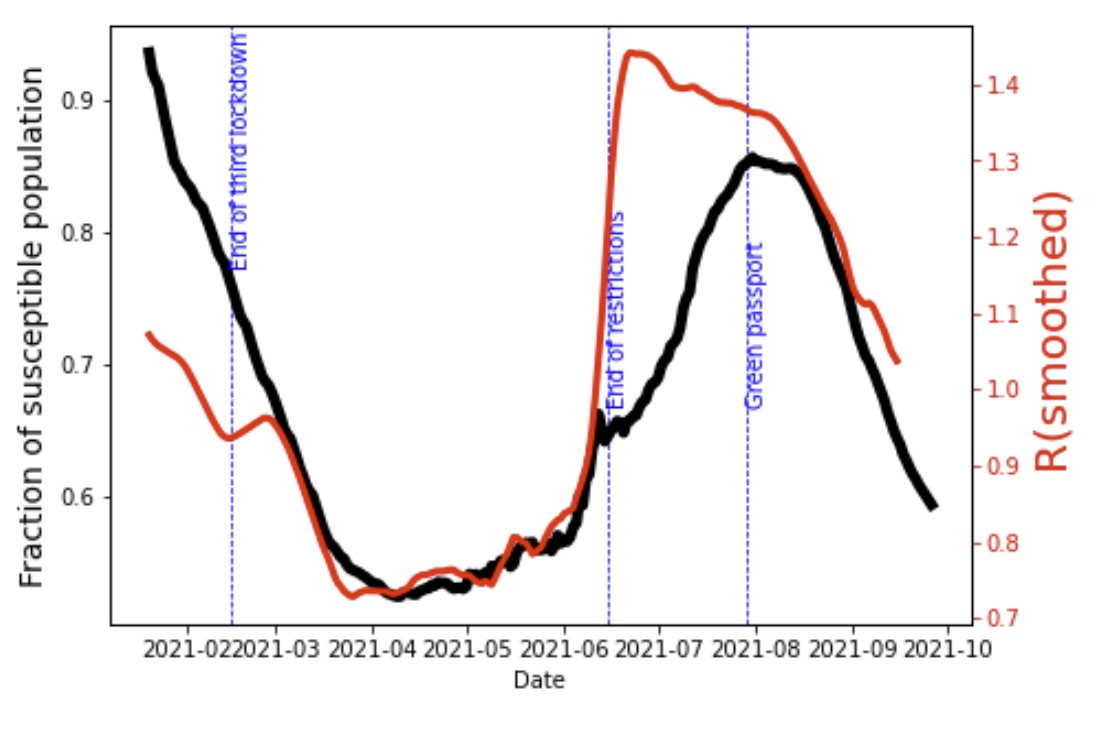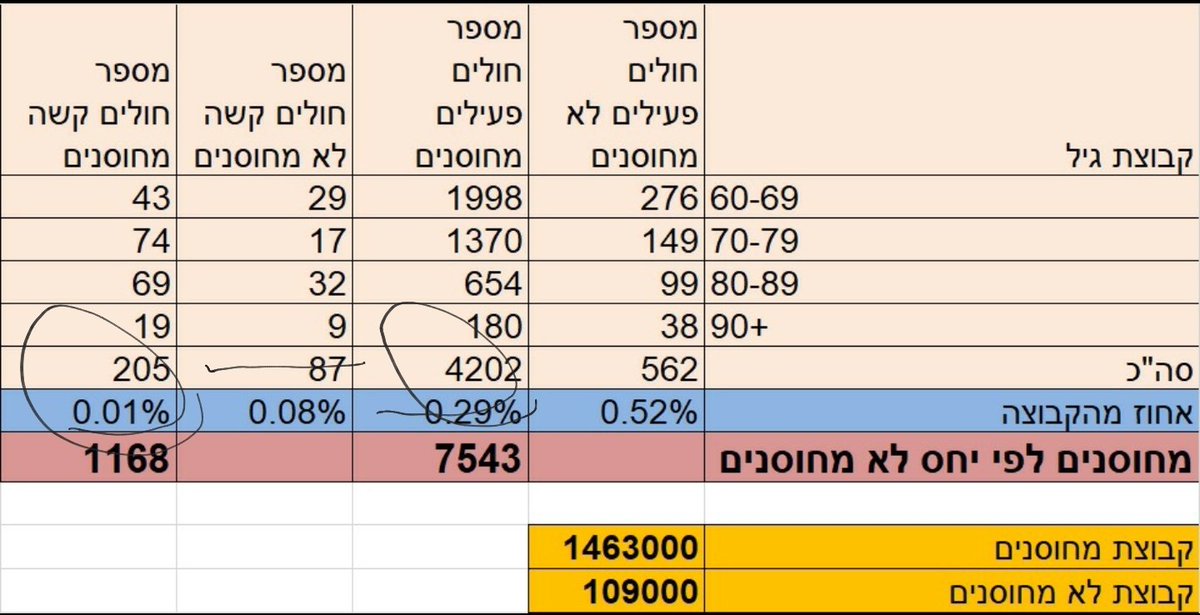
covid19 in 🇮🇱.
Due to ✡️ holiday season, it is hard to get a reliable estimator of R. Previously, I showed that the avg susceptiblity of ISR population (S) is nicely correlated with R. This estimator is not affected by # test but only by # vaxxed and VE.
Due to ✡️ holiday season, it is hard to get a reliable estimator of R. Previously, I showed that the avg susceptiblity of ISR population (S) is nicely correlated with R. This estimator is not affected by # test but only by # vaxxed and VE.
https://twitter.com/erlichya/status/1438612458353070084?s=20
As a reminder, S(t), the susceptiblity of day t is 1 - Σf_i(t) •VE_i(t). Where f_i(t) is the % of the population that already took the i-th dose and VE is the efficacy of the dose in day t. Both parameters can be in calculated from MoH public dashboard on a daily basis.
So...
So...
So here is S as a func of time (black) versus smoothed R (red). Both are coorelated.
Now, we don't have good data for R in Sep, BUT due to booster, S is in levels similar to Mar 21 (60%)! At that time, it was enough for R=0.9, so I'm cautionally encouraged that we= heading out😍
Now, we don't have good data for R in Sep, BUT due to booster, S is in levels similar to Mar 21 (60%)! At that time, it was enough for R=0.9, so I'm cautionally encouraged that we= heading out😍

You can replicate this figure and play with the data in this github repo (GPLv3) :
github.com/erlich/covid19…
github.com/erlich/covid19…
• • •
Missing some Tweet in this thread? You can try to
force a refresh













